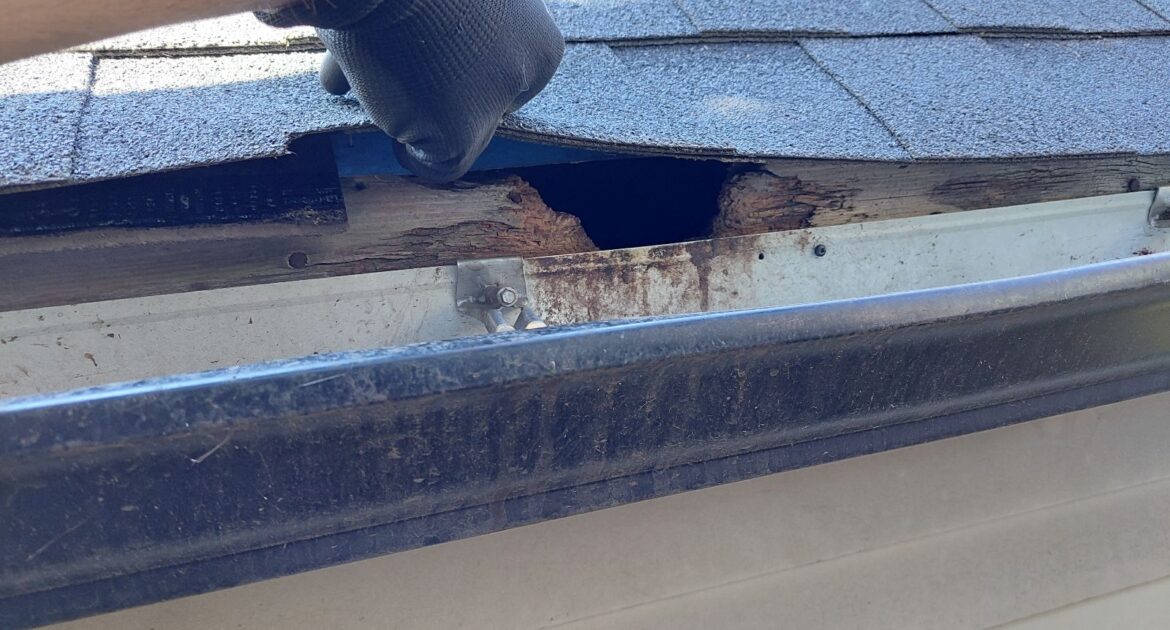There are various types of squirrels in Milwaukee, and any of them can decide to make a nest in your attic. Squirrels prefer to access homes through the attic or roof areas. Once inside, they can cause significant damage to your house.
While squirrels are cute and fun to watch, it is crucial to eliminate easy access to preferred entry sites. You want to keep trees trimmed and bushes manicured. If possible, maintain a distance of at least three feet from your roof line to the nearest tree branch. Also, inspect your roofline often.
Squirrels’ 4 Most Favorite Entry Points
While squirrels are capable climbers and like to nest high in the trees, they also seem to favor the shelter and security of residential and commercial attic spaces. Attics don’t receive much foot traffic, so when squirrels enter the space, they feel safe.
The animal will usually enter the attic through one of four roof vulnerabilities. If you can secure these areas, you can reduce the risks of a squirrel nest inside your home.
1. Roof Edge
The roof edge can represent a weaker point of the structure. The area where the roof meets the eaves often collects moisture, causing degradation of the structure and materials. Because the area tends to be softer and weaker than other spaces on the roof, a squirrel may try its luck with chewing through the materials.
You can prevent damage to this area of the roof by committing to semiannual inspections. It is best to hire a roofing company to ensure everything is installed correctly.
2. Roof Vents

Roof vents allow warm air to escape your attic space. The problem is squirrels sense the warmth and find it enticing, especially during colder months of the year.
Roof vents are typically plastic or aluminum; neither material is a match for a squirrel’s teeth and chew strength. It is best to invest in more durable materials, like galvanized steel.
3. Windows
Most attic spaces have windows to allow for extra ventilation. While windows provide excellent cross-breezes, you must install them correctly. Improperly installed windows can have cracks or openings around the window. Squirrels can easily expose these weaknesses to get inside your attic. Once in your attic, the animal can likely find its way into wall cavities and other areas of the house.
4. Chimney

When considering where do squirrels live, most people think about forests and trees, but neighborhood squirrels will live anywhere they can find shelter and can access. Your home’s chimney, if uncapped, is an easy entry point.
You can use a chimney cap to prevent the squirrel from using the chimney as an access point. You can also line the chimney with clay or aluminum to make it more challenging to climb.
Squirrels Impeccable Gift To Chew
Like other rodents, a squirrel’s teeth never stop growing. They must chew to file their teeth down and prevent health issues. The problem is that squirrels have an impeccable ability to chew through a variety of materials, including aluminum, plastic, and metal.
The animal’s incessant chewing is destructive. It is also one way it makes its way inside your home. Squirrels will chew through window framing, gutter connections, and just about anything else.
Professional Wildlife Control Services Protect Your Property
A professional wildlife control service can protect your property and neighborhood wildlife. Remember, squirrels and other critters are not intentionally destructive; they are only trying to survive. Our team is trained to identify and report to you any damaged structural materials or electrical wires inside your home that have created a fire and safety hazard. If you believe squirrels are nesting in your attic or have seen an increase in squirrel activity around your property, contact Skedaddle Humane Wildlife Control and schedule a property inspection.




